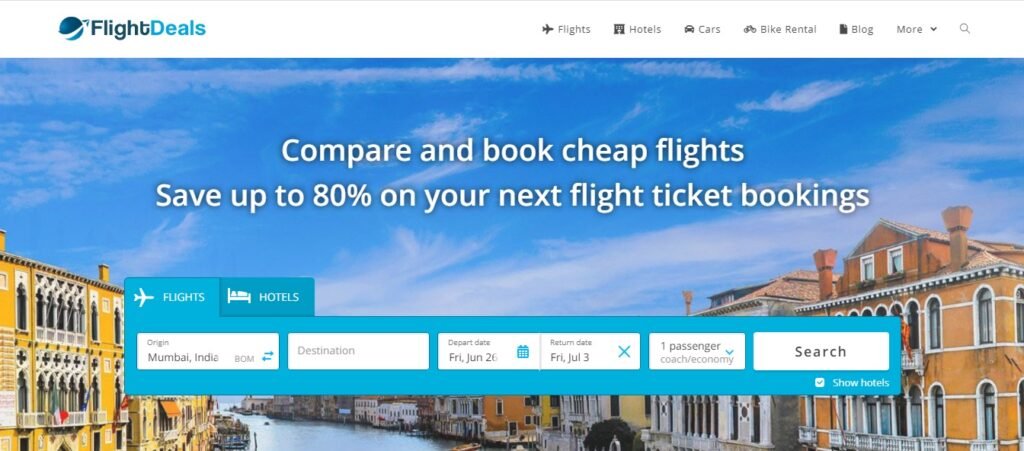Introduction:
In the dynamic landscape of online marketing, search engine optimization (SEO) plays a pivotal role in determining the success of websites, especially in the competitive travel industry. For large companies that rely on organic traffic, acquiring travel affiliate sites can be a strategic move to expand their digital footprint. However, ensuring the scalability of SEO practices across these acquired sites is crucial for sustained success. In this article, we’ll delve into the intricacies of evaluating the SEO scalability of acquired travel affiliate sites and provide actionable insights for on-page SEO experts.
I. Understanding the Landscape of Travel Affiliate Sites:
Before diving into the evaluation process, it’s essential to comprehend the unique challenges and opportunities that come with travel affiliate sites. These platforms typically rely on partnerships with travel agencies, hotels, and other service providers, making them inherently different from other online businesses. The competitive nature of the travel industry and the constant evolution of search engine algorithms add an extra layer of complexity to the SEO strategies employed.
II. Conducting a Thorough SEO Audit:
A comprehensive SEO audit is the first step in evaluating the scalability of acquired travel affiliate sites. This involves a meticulous examination of various on-page and off-page elements, technical aspects, and content quality. Some key areas to focus on include:
a. Keyword Analysis: Identify and analyze the target keywords for each acquired site. Ensure that they align with the overall SEO strategy of the parent company.
b. Content Quality and Relevance: Assess the quality and relevance of the existing content. Determine if it meets the standards set by the parent company and if adjustments are needed to align with the overall brand message.
c. Backlink Profile: Evaluate the backlink profile of each site. Identify high-quality backlinks and potential toxic links that may impact the overall SEO health.
d. Technical SEO: Examine technical aspects such as site speed, mobile-friendliness, and crawlability. Address any issues that may hinder search engine visibility.
III. Standardizing On-Page SEO Practices:
To ensure scalability, it’s crucial to standardize on-page SEO practices across all acquired travel affiliate sites. This involves implementing a consistent approach to:
a. Title Tags and Meta Descriptions: Craft compelling and keyword-rich title tags and meta descriptions for each page to enhance click-through rates and improve search engine visibility.
b. Header Tags and Content Structure: Standardize the use of header tags to create a logical and hierarchical structure. Ensure that content is well-organized and easy to read.
c. Image Optimization: Optimize images by using descriptive filenames, alt text, and compressing them for faster loading times.
d. Internal Linking: Implement a cohesive internal linking strategy to guide users and search engine crawlers through relevant content.
IV. Leveraging Local SEO for Travel Affiliate Sites:
Given the location-centric nature of travel, incorporating local SEO strategies is vital. This includes:
a. Local Keyword Targeting: Identify and target location-specific keywords to capture local search traffic.
b. Google My Business Optimization: Ensure that each site has an optimized Google My Business profile, providing accurate business information and enhancing local visibility.
c. Customer Reviews and Ratings: Encourage and manage customer reviews, as they can significantly impact local search rankings.
V. Incorporating User Experience (UX) Optimization:
User experience is a critical factor in SEO success. Evaluate and enhance the UX of acquired travel affiliate sites by:
a. Mobile Optimization: Prioritize mobile optimization to cater to the increasing number of users accessing travel information on smartphones and tablets.
b. Page Speed Improvement: Optimize site speed to reduce bounce rates and improve search engine rankings.
c. Clear Call-to-Action (CTA): Ensure that each page has a clear and compelling CTA to guide users through the conversion funnel.
VI. Content Strategy and Marketing:
A robust content strategy is indispensable for the success of travel affiliate sites. Focus on:
a. Evergreen Content Creation: Develop evergreen content that remains relevant over time, providing long-term value to users.
b. Visual Content: Incorporate visually appealing content, such as travel guides, images, and videos, to enhance engagement and shareability.
c. Promotion of Travel Website for Sale: Integrate subtle mentions and links promoting the availability of travel websites for sale from the parent company, emphasizing the benefits of acquiring a pre-optimized platform.
VII. Monitoring and Continuous Improvement:
SEO is an ongoing process that requires constant monitoring and adaptation. Implement a system for:
a. Regular Performance Monitoring: Use analytics tools to track the performance of each acquired site, identifying areas for improvement.
b. Algorithm Updates: Stay informed about search engine algorithm updates and adjust strategies accordingly to maintain or improve search rankings.
c. A/B Testing: Conduct A/B testing for various elements, such as CTAs, headlines, and content formats, to optimize for user engagement and conversion rates.
Conclusion:
In conclusion, evaluating the SEO scalability of acquired travel affiliate sites is a multifaceted process that demands attention to detail and a strategic approach. By conducting thorough audits, standardizing on-page SEO practices, leveraging local SEO, optimizing user experience, and implementing a robust content strategy, companies can ensure the success of their digital acquisitions. The dynamic nature of the travel industry requires continuous monitoring and adaptation, making SEO scalability an ongoing commitment to maintaining organic traffic growth.



